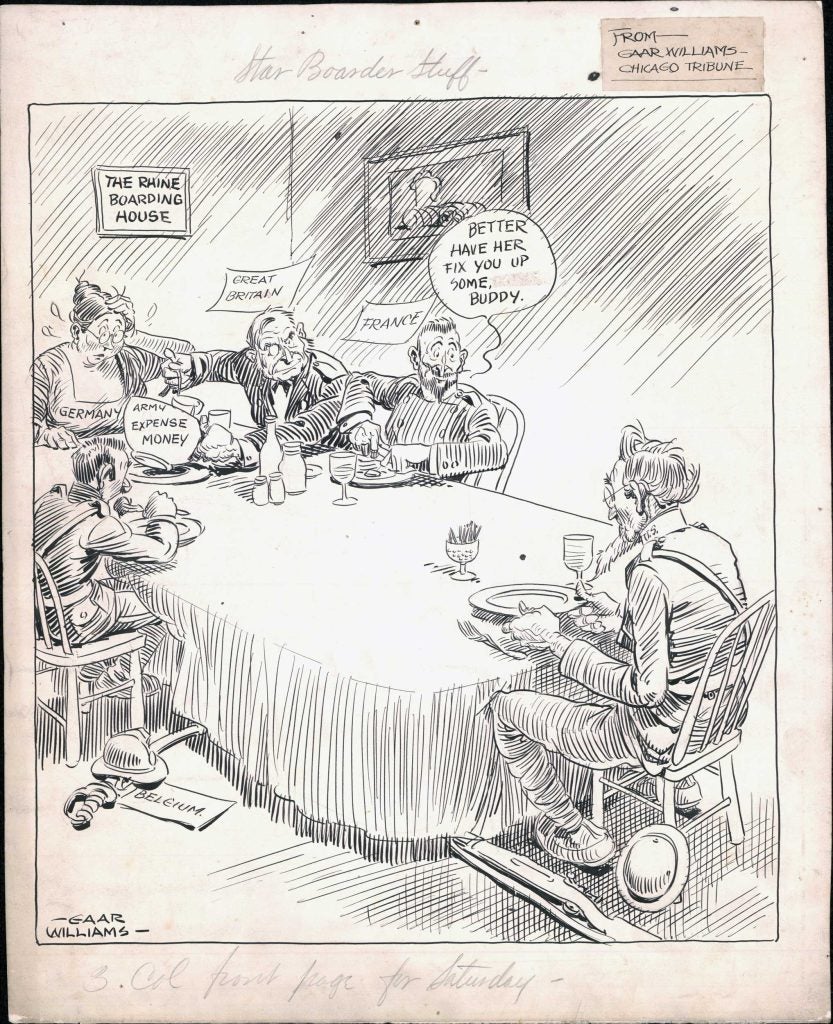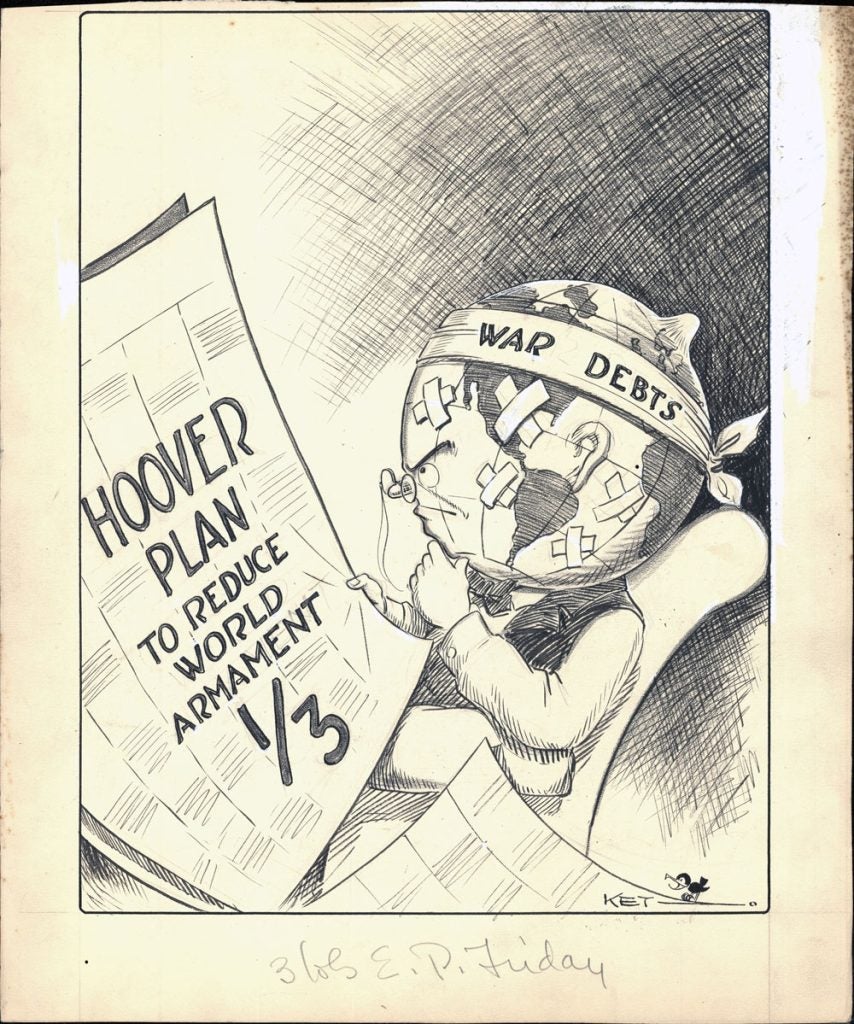
1932.03.24 “Star Boarder Stuff”
by Gaar Campbell Williams (1880-1935)
14 x 18 in., ink on board
Coppola Collection
Campbell was a prominent American cartoonist who worked for the Indianapolis News and the Chicago Tribune.
You want your war reparations from Germany, Uncle Sam? You best speak up and get in line. The post-WW1 economy did not enable countries to settle up on their debts and obligations.
The Hoover Moratorium was a public statement issued by United States President Herbert Hoover on June 20, 1931, who hoped to ease the coming international economic crisis and provide time for recovery by instituting a one-year moratorium on payments of German and inter-Allied war debt stemming from World War I. The proposal would postpone the repayment of both capital and interest. Many, both in the United States and abroad, were outraged by this idea.
The Hoover moratorium on payment of reparations and intergovernmental debts expired July 1, 1932.
However, neither the moratorium nor the permanent cancellation of the reparations did much to slow the economic downturn in Europe. A committee formed under the terms of Young Plan – a previous reduction in Germany’s war debt schedule – concluded that Germany would not be able to meet its obligations, and recommended that their debt be permanently cancelled. At the Lausanne Conference, later in 1932, the United Kingdom and France relieved Germany of its reparation payments, subject to their being able to reach an agreement with the United States concerning their own outstanding war debts.

“War Debts” (June 24, 1932)
by Frank “KET” Kettlewell (1889-1969)
15 x 18 in., ink on board
“KET” is Frank Kettlewell, a political cartoonist who published mainly in the Oakland Tribune in the era of the early twentieth century. Joining the staff in 1912, he rose quickly to become chief of the Tribune’s Art Department. He also created a drawing of Sutter’s Mill that was adapted by the U.S. Post Office into a 1949 Gold Rush commemorative stamp.
Disarmament between the World Wars: 1919-1939.
The death and destruction of World War I motivated an international interest in ways of preventing future large-scale wars. Disarmament and/or parity was one of the policy targets.
Woodrow Wilson included disarmament as an Article in the charter for the League of Nations. After him, Harding pushed for parity in the three strong Naval forces: the US, UK, and Japan. The Coolidge administration developed the Kellogg-Briand Pact, also known as the Pact of Paris for the Renunciation of War (1928), which renounced offensive war as an instrument of national policy. It called on nations to settle their differences by peaceful means. There was no teeth in its enforcement, and so it really went nowhere, although its terms ended up being the foundation for the Nuremberg Trials of crimes against humanity.
A World Disarmament Conference was convened in Geneva on February 2, 1932. President Hoover, and then FDR after him, attempted to spur these negotiations periodically. Citing the Kellogg-Briand Pact’s outlawing of aggressive war, Hoover (June 22, 1932) proposed a one-third reduction in all armies and battle fleets. Additionally, he urged the abolition of tanks, large mobile guns, and chemical weapons and the prohibition of aerial bombardment.

